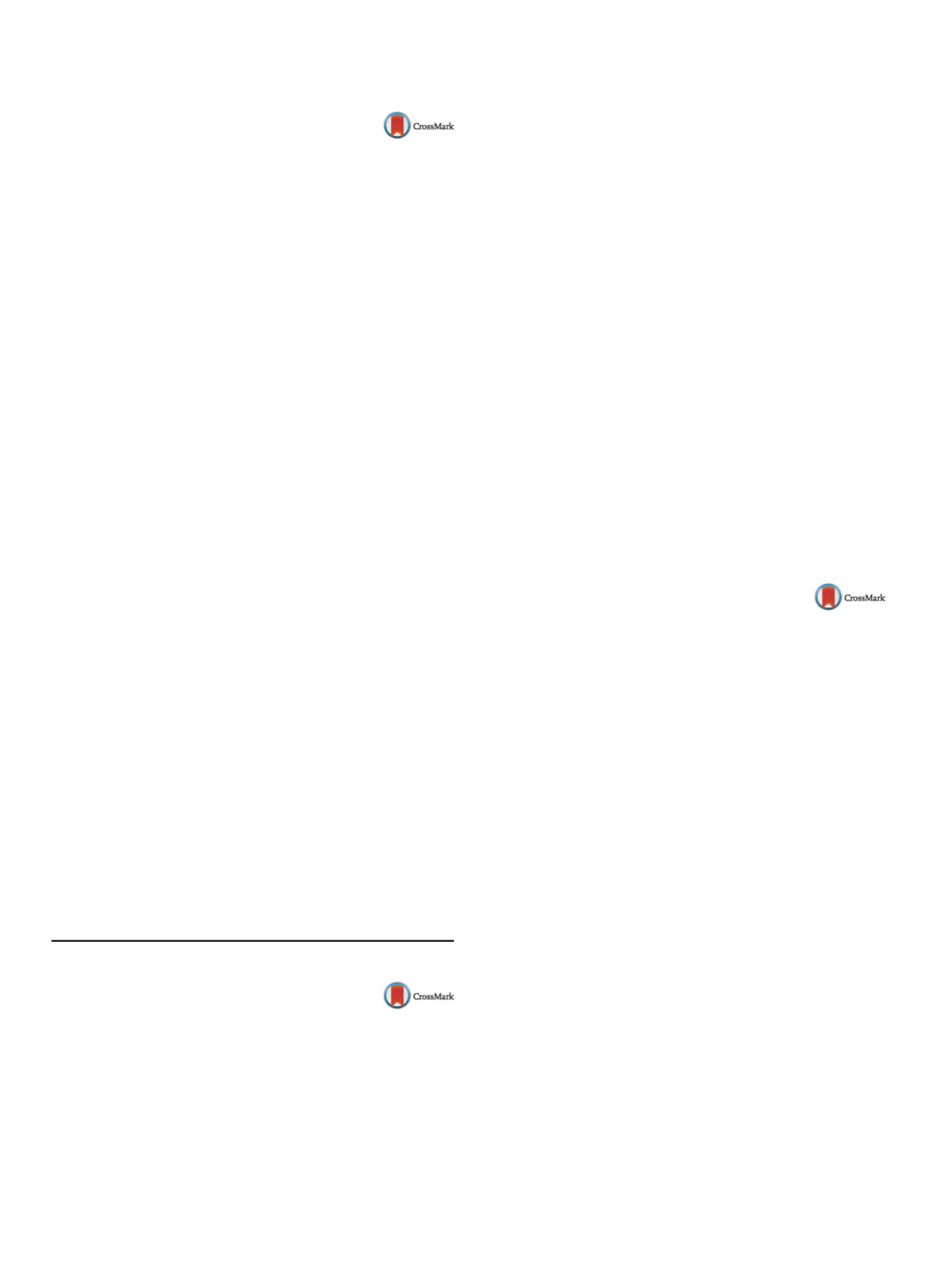

S78
25th European Congress of Psychiatry / European Psychiatry 41S (2017) S69–S105
O026
Effectiveness of psychoeducational
family intervention on coping
strategies of relatives of patients with
bipolar I disorder
M. Savorani
∗
, G. Borriello , V. Del Vecchio , G. Sampogna ,
C. De Rosa , C. Malangone , M. Luciano , B. Pocai , V. Giallonardo ,
A. Fiorillo
University of Naples SUN, Psychiatry, Naples, Italy
∗
Corresponding author.
Background
Relatives’ coping strategies – an essential element
for the recovery of patients with severe mental disorders – are
grouped in problem-oriented and emotion-focused. The former
include practical strategies to deal with the stressful situation and
are associatedwith a better long-termoutcome of patients and rela-
tives; the latter are psychologically driven and are associatedwith a
worse outcome. It has been reported that psychoeducational family
intervention (PFI) can improve problem-oriented coping strategies,
while few data are available on relatives of patients with bipolar
disorder.
Objectives
To assess the impact of the PFI on promotion of
problem-oriented coping strategies adopted by relatives of patients
with bipolar I disorder.
Methods
This study was conducted in 11 Italian mental health
centers. Patients and their relatives were allocated to the experi-
mental group receiving PFI or to the control group (waiting list).
Before starting the intervention and at the end of the PFI, coping
strategies were assessed using the family coping questionnaire.
Results
Of the 139 recruited families, 72 families were allo-
cated to the experimental group and 67 to the control group.
Relatives from the experimental group reported a significant
improvement in problem-oriented coping strategies, such as posi-
tive communication (
P
< .01) and searching for information (
P
< .05).
On the other hand, a reduction in collusion (
P
< .0001), avoidance
(
P
< .01) and resignation (
P
< .001) were found at the end of the
intervention.
Conclusions
PFI is effective in promoting the coping strategies in
relatives of patients with bipolar I disorder and it should be given
routinely in mental health centers.
Disclosure of interest
The authors have not supplied their decla-
ration of competing interest.
http://dx.doi.org/10.1016/j.eurpsy.2017.01.248Oral communications: Classification of mental
disorders; comorbidity/dual pathologies;
psychopathology; psychopharmacology and
pharmacoeconomics and sleep disorders & stress
O027
Integrating the findings from
boundary sciences for development of
the DSM/ICD classifications
I. Trofimova
McMaster University, Psychiatry and Behavioral Neurosciences,
CILab, Hamilton, Canada
Introduction
Temperament and mental illnesses are considered
to be varying degrees along the same continuum of imbalance in
the neurophysiological regulation of behavior. Mental disorders are
linked to specific patterns in the relationships between neurotrans-
mitters and between brain structures. Similar links were found for
temperament traits. Development of DSM and ICD classifications
might benefit therefore from an integration between psychiatry,
functional neurochemistry and differential psychology.
Objectives
To describe the neurochemical systems underlying
mental disorders and temperament traits in healthy adults.
Methods
Findings in neurochemistry, neuropsychology, differ-
ential psychology and psychopathology are compared to the traits
described in various temperament models. This analysis is summa-
rized in the perspective of the neurochemical functional ensemble
of temperament (FET) model.
Results
Neurochemical correlates for 12 main dynamical aspects
of behavior are presented as a systemic framework that follows
a universal functional structure of human actions described in
kinesiology, neuroanatomy, neurochemistry and clinical neuropsy-
chology. The role of monoamine systems (serotonin, dopamine,
noradrenalin), acetylcholine, GABA/glutamate, neuropeptide and
opioid receptor systems are linked to regulation of specific dynam-
ical properties of behavior in a systematic way. Several insights
for the structure of the classification of mental disorders from the
perspective of the FET model are proposed.
Conclusions
An integration of research in neurochemistry and
psychopathology of behavior with differential psychology based
on healthy samples can bring new insights for future versions of
DSM and ICD classifications of mental disorders. Such integration
does not follow either dimensionality or categorical approach but
instead is based on functional ecology of human behavior.
Disclosure of interest
The author has not supplied his declaration
of competing interest.
http://dx.doi.org/10.1016/j.eurpsy.2017.01.249O028
Substance use disorder among
admitted patients with bipolar
disorder in a psychiatric service
during a three-year period
M. Fernandes
∗
, S. Silva , D. Mota , A. Oliveira , J. Ribeiro ,
V. Santos , N. Madeira , C. Pissarra , Z. Santos
Centro Hospitalar e Universitário de Coimbra, Centro de
Responsabilidade Integrada em Psiquiatria e Saúde Mental, Coimbra,
Portugal
∗
Corresponding author.
Introduction
Bipolar disorder has the highest rates of comor-
bid substance use disorders. Approximately 60% of patients with
bipolar I disorder have a lifetime diagnosis of a substance use dis-
order (SUD). Excluding tobacco, alcohol is the substance most often
abused, followed by cannabis, amphetamines and cocaine.
Objectives
Determine the prevalence and compare sociodemo-
graphic and clinical variables in patients with SUD comorbid
diagnoses and patients without this comorbidity.
Methods
Charts of all patientswith a diagnosis of bipolar disorder
admitted in the Coimbra Hospital and Universitary Center over a
three-year period (2013–2015) were reviewed to gather data on
sociodemographic and clinical data.
Results
During a three-year period, 189 patients were admit-
ted with bipolar disorder, almost half of patients (47,6%) had a
SUD comorbid diagnostic. Comorbidity of BD and SUD is character-
ized by a complicated course with multiple recurrences of bipolar
episodes and increased hospitalizations. The risk of suicide attempt
is significantly higher when associated with SUD. In addition, BD is
associated with pervasive social, family, and employment dysfunc-
tion. Poor treatment adherence in this population is also a serious
clinical challenge that significantly impacts treatment response and
outcome. The authors will analyze all this variables in the popula-
tion admitted.
Conclusion
According to the most recent literature on SUD and
BD, these two problems occur together so frequently that all
patients with a bipolar diagnosis should also be assessed for drug
and alcohol problems. BD complicated by SUD represents a seri-


















